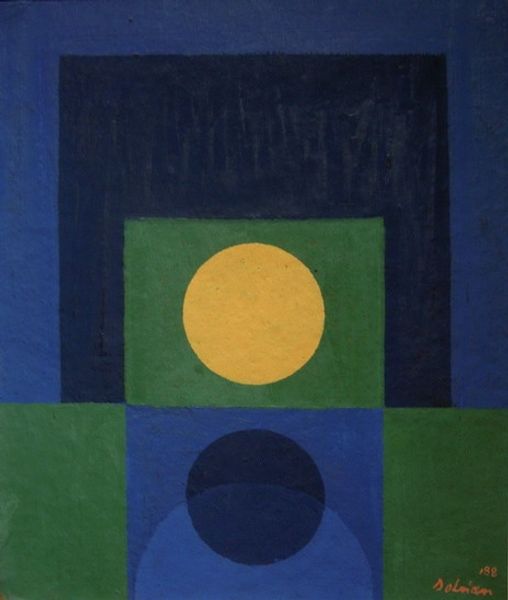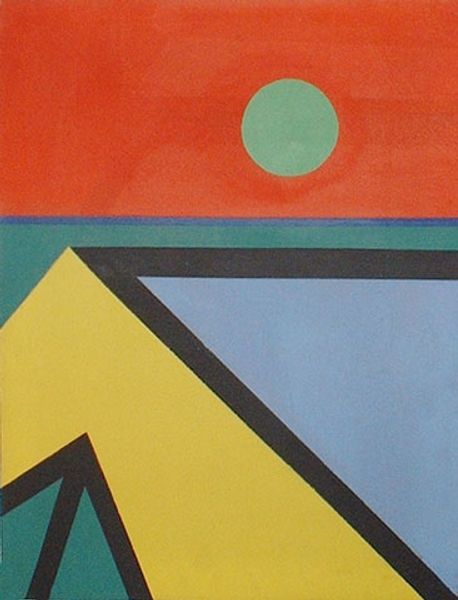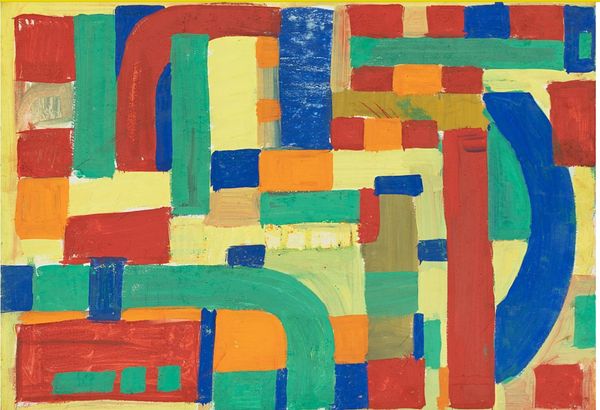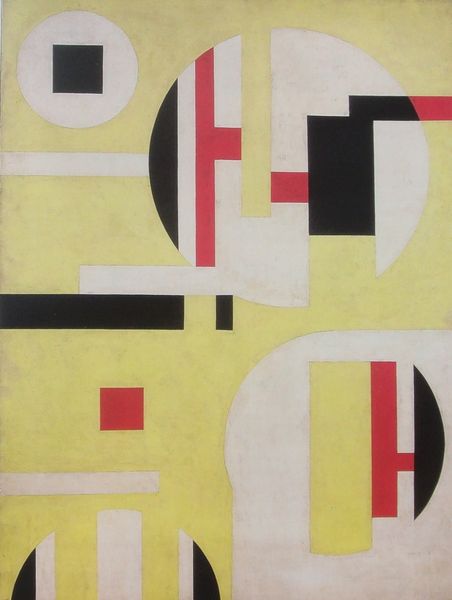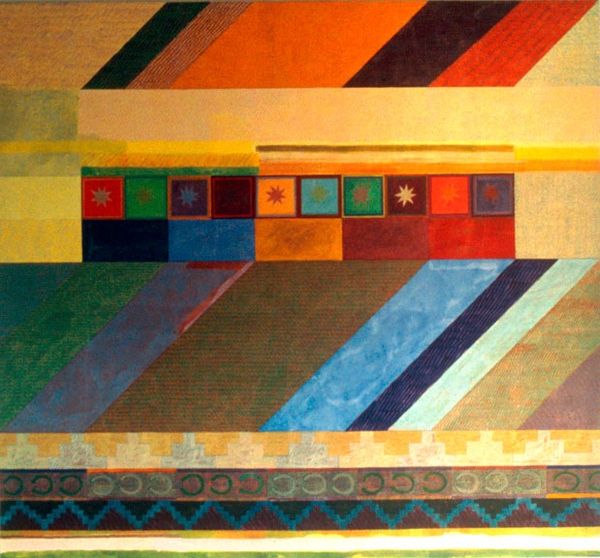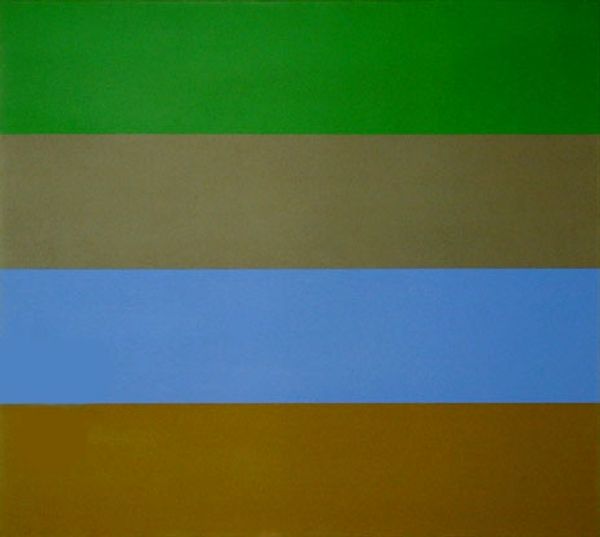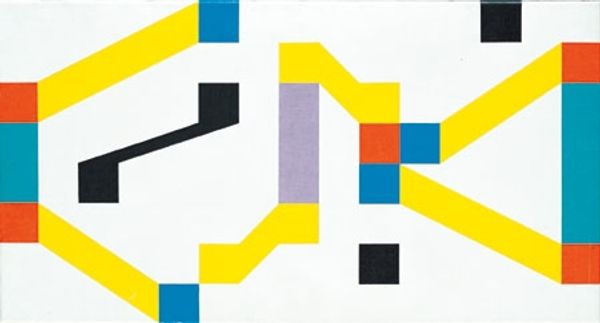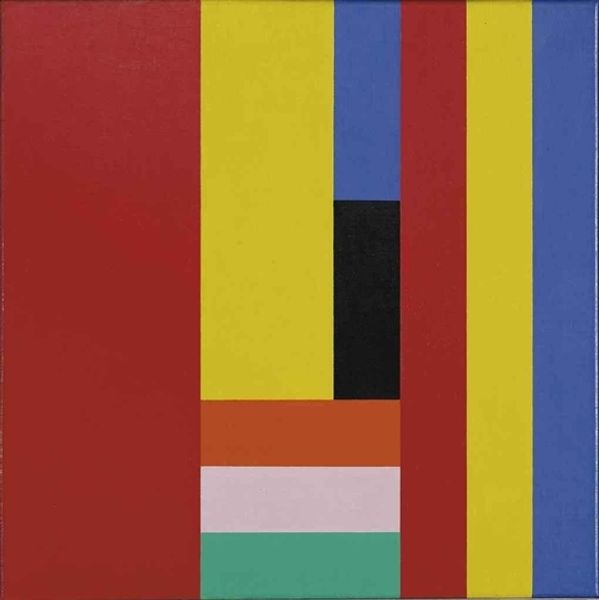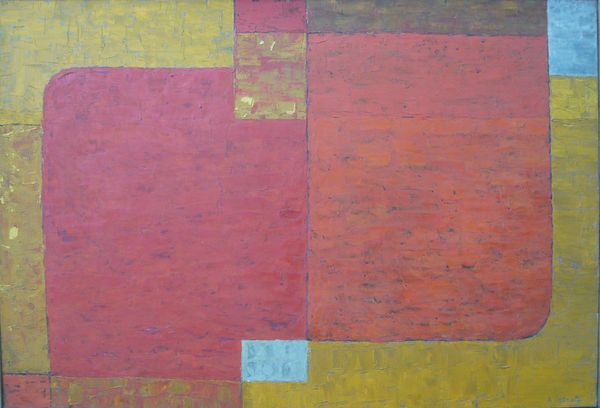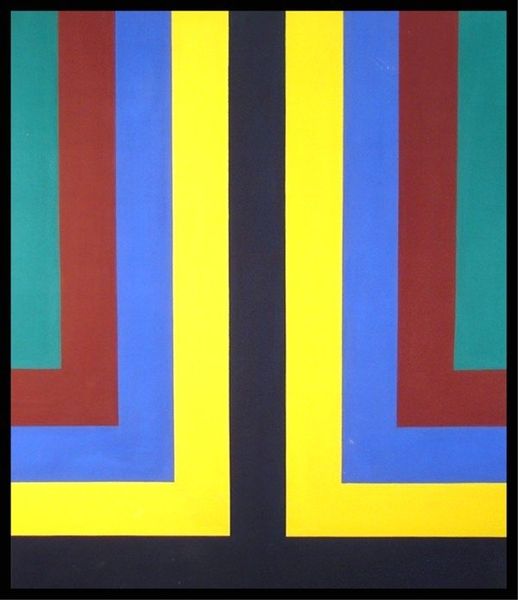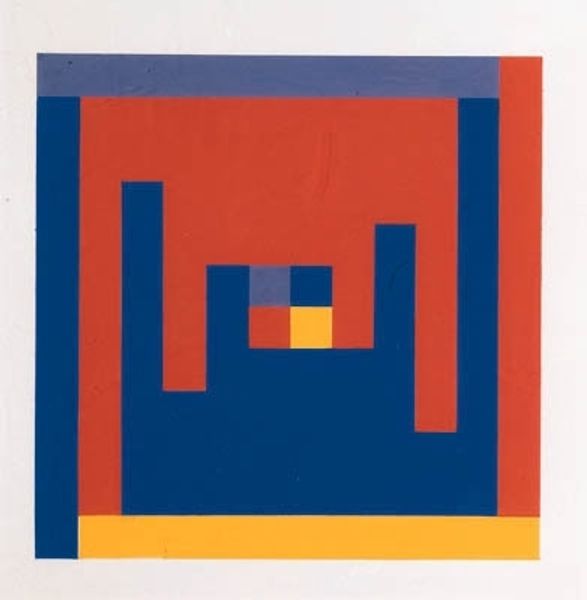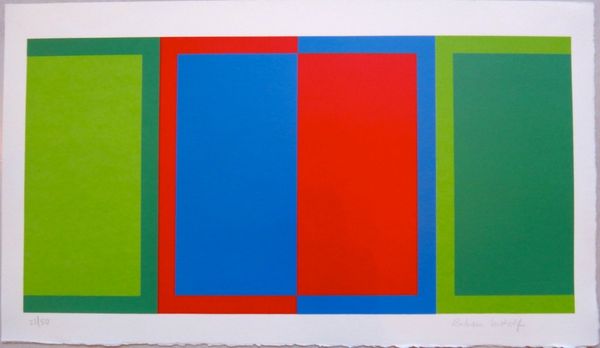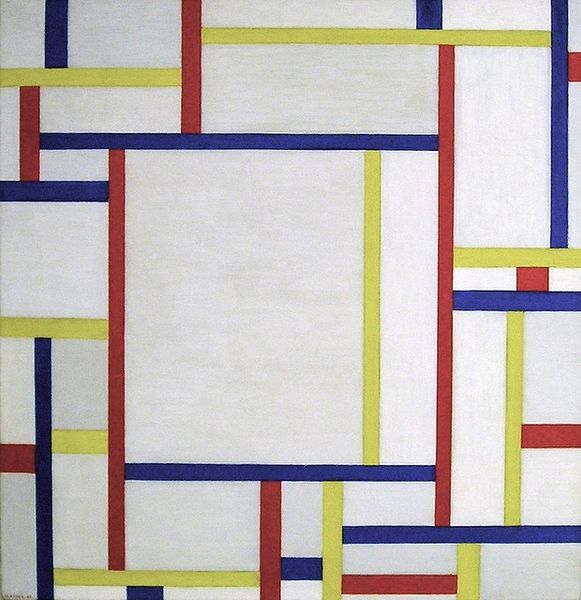
acrylic-paint
#
acrylic
#
colour-field-painting
#
acrylic-paint
#
acrylic on canvas
#
geometric
#
geometric-abstraction
#
abstraction
#
line
#
modernism
#
hard-edge-painting
Copyright: Vasile Dobrian,Fair Use
Editor: Vasile Dobrian's "Double Life," created in 1969 with acrylic on canvas, presents a series of nested geometric shapes. The colors – yellows, blues, greens, and blacks – are so striking, creating a captivating, almost assertive presence. How do you interpret this work? Curator: Considering it was created in 1969, let's think about that socio-political context. Do you see echoes of hard-edge painting, and perhaps a critique of established power structures embedded in its geometry? Editor: Hard-edge, definitely! But critique? The geometric abstraction feels more...ordered, maybe? Less overtly rebellious than other art from the time. Curator: Exactly, but perhaps the order itself is a commentary. Geometric abstraction can be seen as a language – its own form of codified resistance or compliance. How might the repeated rectangles relate to societal structures? Consider its implications related to identity or institutional constraints. Editor: Interesting thought! So the controlled forms and colors might represent, or even challenge, rigid social norms? Like the double-sided shapes with colors split may relate to internal conflict. Curator: Precisely! Dobrian's choices could signify a deeper engagement with the complexities of navigating a world shaped by fixed roles. The muted tones even suggest a weariness or constraint on one’s expression. This could subtly protest the status quo through this formal aesthetic language, don’t you think? Editor: That reframes everything for me! I initially saw the colors as just visually striking. Now I can see a potential challenge embedded within the color choices. Thank you for helping to interpret how to relate a geometric abstract piece to the culture and history surrounding its production. Curator: It’s crucial to analyze art as an act of conversation, where visual vocabulary provides opportunities to negotiate identities and even challenge established ways of thinking, regardless of historical constraints.
